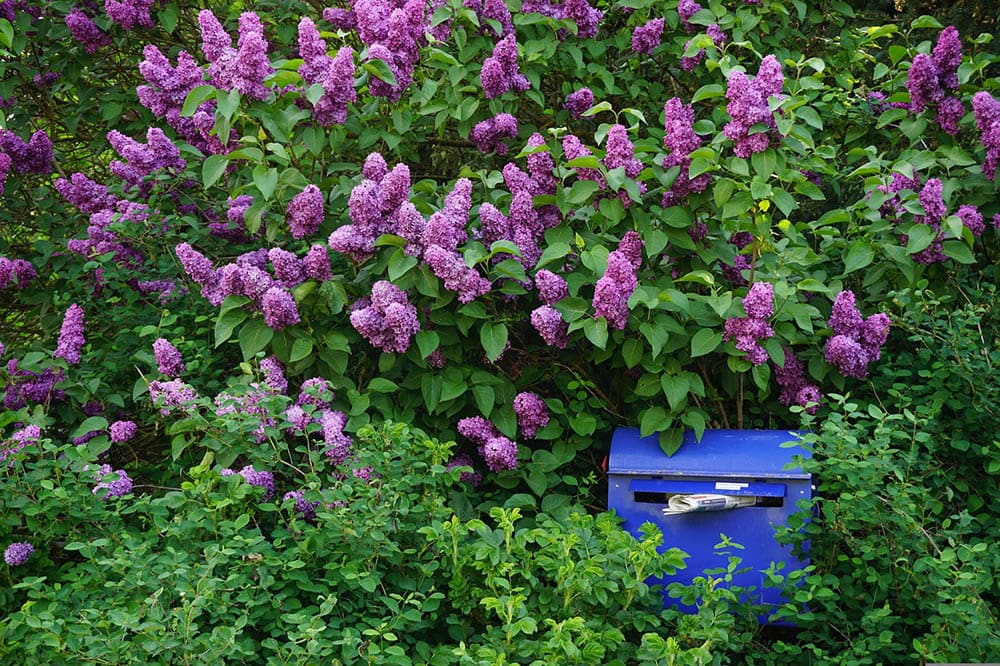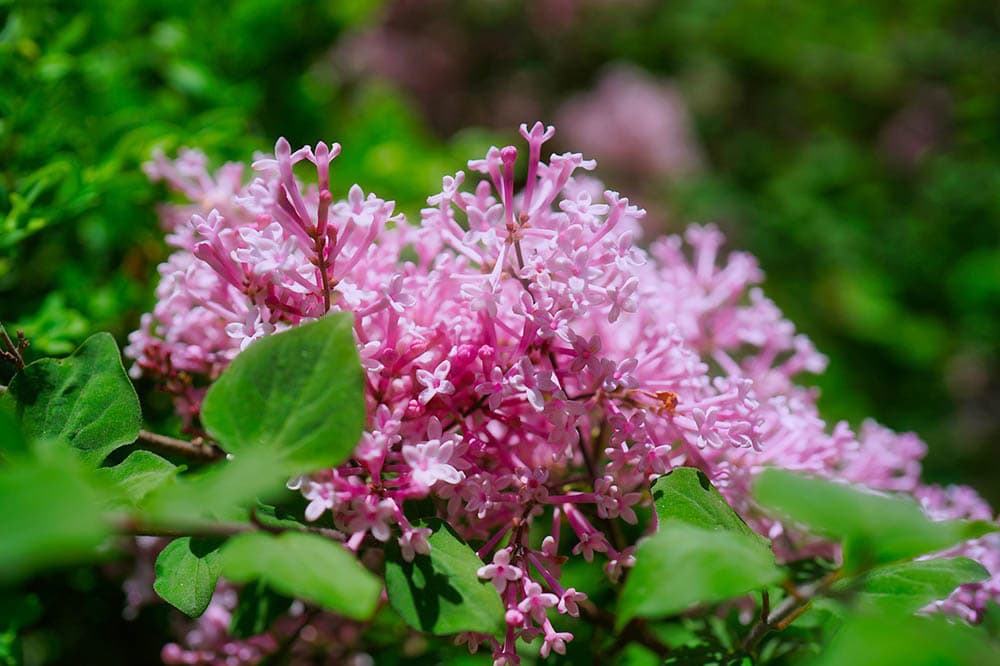How Fast Do Lilac Bushes Grow? 4 Tips & Tricks
-
Pete Ortiz
- Last updated:

Lilac bushes are best known for their gorgeous, fragrant blooms. There are over 1,600 lilac cultivars1 that vary in size, ranging from dwarf shrubs that grow to a maximum of 6 feet to 15-foot bushes. The plants produce purple, magenta, pink, white, blue, or violet hues, depending on the species.
Generally, it takes two to three years for young lilac bushes to produce their first blooms. They are fast-growing and can grow by 12 to 18 inches annually. Fully matured lilac bushes can reach up to 15 feet tall and 10 feet wide.
If you have just transplanted young lilac bushes, it’s normal to want to see those huge fragrant blooms as soon as next season. Read on to learn how fast these beautiful shrubs grow. We will also discuss how to start right and provide the perfect conditions to fuel fast, healthy growth.
Lilac Bushes Growth Rate
Lilac bushes have a moderate to fast growth rate. The amount of growth to expect yearly highly depends on factors like species, the amount of thought that goes into choosing the planting site, and the level of care you give the shrubs until they are established.
Under ideal conditions, lilac shrubs hardly disappoint and can grow 12 to 18 inches taller yearly!
Lilacs thrive in hardiness zones 4-7, although some species, like the early lilac, survive in hardiness zone 3. They grow best in sunny sites with fertile, humus-rich, well-draining, slightly alkaline soil. Choosing suitable planting conditions and providing adequate water during dry spells will ensure the best growth rate annually.

The 4 Tips & Tricks on How to Make Lilac Bushes Grow Faster?
Lilacs, irrespective of species, are loved for their reliability, toughness, gorgeous blooms, and fantastic fragrance. These deciduous multi-stemmed shrubs can grow for over 100 years while blooming each spring.
If you desire to add lilac bushes to your yard, you can give them the best chances of a healthy start by planting in spring or fall. Planting in fall is preferred, although either season will suffice. Here are a few tried and tested tips to make lilac bushes grow faster.
1. Choose a Planting Site With Plenty of Sunlight
A sure way to accelerate the growth rate of your lilac bushes is to ensure they receive plenty of sunlight. Choose your planting site carefully and avoid any spots with shade. Even though lilacs will grow in partial shade, you will not enjoy the best growth rate annually.
2. Be Picky About the Soil
Lilac bushes are not selective about soil, although there are good reasons for you to mind the PH where you plant them. If you want your shrubs to grow optimally, it’s crucial to plant them in soil with PH levels ranging between 6.0 and 7.0. Also, ensure the soil is well-draining and nutrient-rich to encourage a healthy and fast growth rate.
Choosing the ideal soil can make a difference in the growth pace of your lilac bushes. While these shrubs are hardy and will grow in most conditions, they will not grow to their full potential if the soil is not slightly alkaline.

3. Keep the Soil Moist
Like most shrubs, lilacs love moist soil. They love being watered deeply, although not too frequently. Ideally, it would help if you watered the bushes every 10 to 14 days, depending on the weather conditions.
If you want your bushes to grow fast and bloom in spring, you must avoid overwatering them. Too much water hinders proper blooming, and the shrubs could die if the soil doesn’t drain well. Getting into a healthy watering pattern is essential for the best growth pace of lilacs.
Also, don’t forget to mulch your lilacs every spring to maintain the best soil moisture during the blooming season.
4. Apply Fertilizer in Spring
Another way to enhance your lilacs’ growth rate is to make a fertilizer application in spring, right after the blooming season. The nutrient boost will support the next flowing season, ensuring you have plenty of lilac blooms next spring.
Make sure you use a granular fertilizer rich in phosphorus for the best results. Fertilizers with superphosphate and limestone are also ideal because they keep the soil’s acidity in check. Annual feeding using traditional fertilizer mixes is imperative, especially if your lilacs don’t enjoy plenty of organic matter.
Final Thoughts
Lilacs are easy to grow and maintain. By providing the ideal conditions, you can ensure your bushes grow fast and bloom at full capacity. Because different lilac species flower nearly simultaneously, you can mix them in your yard to enjoy the most delightful floral extravaganza each spring.
We hope you are now well-acquainted with what to expect of your young shrubs and the tricks to implement to ensure the best results.
A final tip is that you must not underestimate the power of rejuvenation pruning, especially if your bushes have poor flowering patterns. While this tip will not work overnight, the new branches will bloom more vigorously. In a few seasons, they will bless you with a pop of color in your yard and a sweet fragrance in the air.
- Related read: 18 Companion Plants for Lilacs (With Pictures)
Featured Image Credit: Uta E., Pixabay
Contents



